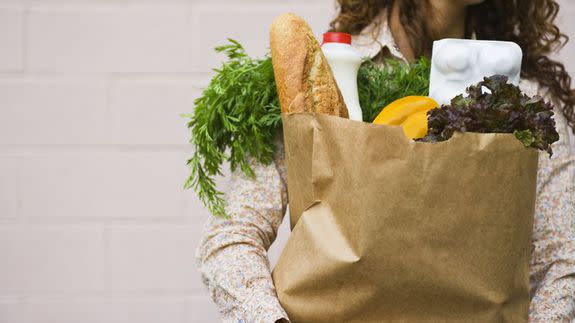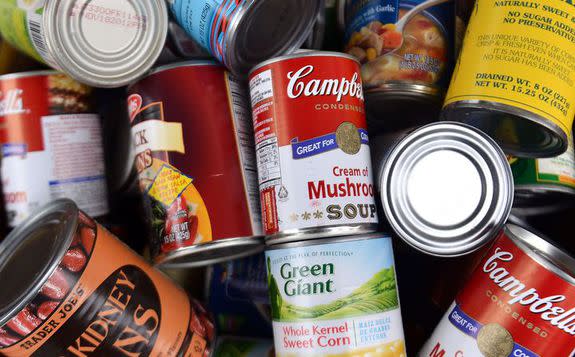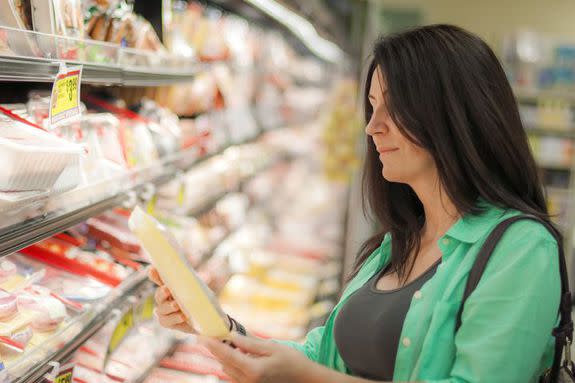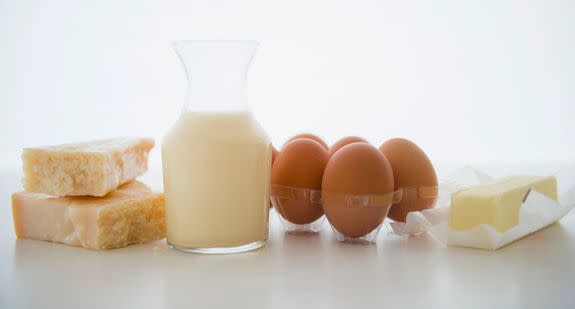Amazon Go is coming, so it's time to learn how to bag your own damn groceries

Amazon Go is coming, and that means you're finally going to have to bag your own groceries.
*gasp*
On Monday, Amazon released its new app that aims to revolutionize in-store shopping by allowing users to swipe their phones upon entering a store, scan items along the way and then, well, to put it simply... leave.
Sounds convenient, right? Well, not if you're a stranger to the self-checkout line and have relied on cashiers to bag your groceries all these years.
SEE ALSO: Amazon Go is a much better idea than delivery drones
With the new Amazon Go app, shopping (like so many other things in life) is about to become totally centered around your smartphone. With Amazon Go’s new "Just Walk Out" technology, customers won't have to wait in those pesky checkout lines, which means there will no longer be a need for cashiers.
Aside from taking away many employment opportunities for cashiers, getting rid of checkout lines will also leave shoppers to complete one very daunting task on their own. That's right, thanks to Amazon Go you'll finally have to abandon those lazy ways and learn how to bag your own damn groceries.
If the thought of bagging groceries on your own sends shivers down your spine, don't worry — we sought advice from an expert.
Mashable spoke with Jacquelun Mosley, a manager at Trader Joe's — a California-based grocery chain with over 450 stores — in Manhattan to learn the art of successful and efficient grocery bagging.
Newsflash, people: you can't just be throwing in cleaning supplies with your poultry. That's not the way the world works. Here are five tips that will help you bag your groceries like a pro when there's not a pro around to show you how it's done.
1. Put the heaviest items at the bottom of the bag

Image: mashable composite: Jerod Harris /getty images
First things first. It's up to you to protect your groceries during the bagging process, which means taking weight into consideration.
Mosley, who has been with Trader Joe's for 15 years, explained a key component of the company's bagging training is teaching cashiers to put all the heavy items such as canned food, bags of sugar or boxes of garbage bags on the bottom of the bag.
These heavy items will serve as a sturdy base and ensure that more malleable foods like cheeses, fruits and vegetables are not damaged during transit.
"You put your heaviest stuff at the bottom and work your way up," Mosley said. Then you can move start packing your more delicate items like bread and chips on top.
Last but not least, you must use extra caution with those breakable eggs. Eggs are the icing on the cake, the star on the Christmas tree — they are always on top. You hear? Or better yet, just give them their own bag to be safe.
2. Utilize the 'box it off' method to keep your bags open while you fill them
One of the marvelous things about professional baggers is their speed.
Unfortunately, when us mere untrained mortals attempt to mimic those actions, the plastic bag handles flop over, closing the bag and inhibiting our speedy flow. It's frustrating as hell but luckily there's a way to prevent it.
When it comes to efficient bagging, Mosley confessed Trader Joe's employees use a nifty method to keep the bags open while also ensuring proper item placement and even weight distribution. This is known as the "box it off" method.
Essentially, to perfect the "box it off" method, start your packing from the outer corners and work your way inward. Don't just mindlessly throw items into the bag. "You have to put something at each corner of the bag to keep it open," she explained.
And when things get really heavy, don't be afraid to double bag to prevent tearing and embarrassing bag breaks in the parking lot.
3. Put meat in poultry bags to avoid contaminating other groceries

Image: Moussa81/getty images
Poultry and other meats are delicious when they're cooked, but until then, you have to proceed with caution.
Meats carry pathogens that can easily transfer to and contaminate other items if not properly contained, so it's important these items get their own bag, according to the Institute of Food Technologists.
To step things up a notch, we highly suggest pre-bagging your meats by making use of the produce bags your grocery store offers. "In regards to meat, if it’s chicken or any type of poultry we always try to put it into a produce bag before putting it into another grocery bag," Mosley shared.
Another major plus of double bagging your poultry is that you'll be able to contain any potential messy leaks your meat packages could be emitting. Gross.
4. Bag as you go to speed up the process
When it comes to bagging, waiting until you've scanned all your items to pack them is not the way to go.
To maximize bagging efficiency, when using Amazon Go take a cue from the legendary cashiers who bag your groceries as they scan, rather than letting them all pile up at the end of the conveyor belt.
So as you're zooming through the store grabbing items with your newfound Amazon Go freedom, rather than simply throwing them in your cart and bagging before you leave, have bags on hand to gradually complete the process.
5. Group like items together

Image: Jamie Grill/getty images
You know that old saying, "opposites attract?" Well, that doesn't apply to the world of bagging groceries. Opposites destroy.
One of the most essential pieces of advice when it comes to bagging your beloved food products is that like items — such as those that require refrigeration — belong together.
Not only does organizing bags of food by temperature (frozen, refrigerated and room) make putting your groceries away much easier, but as the Institute of Food Technologists reported, packing foods of the same temperature together will help "avoid spoilage or contamination."
Bacteria from meats is easily transferable, so you'll want to keep your poultry and ground beef away from raw fruits and veggies. And don't even get me started about non-edible items such as cleaning products, bug spray and laundry detergents. Keep those babies far away from food to prevent hazardous contamination and possible death. Yep, bagging correctly saves lives.
Fears and intrigue surrounding Amazon Go
When it comes down to it, Amazon Go may be cool, but it will not bag your groceries for you.
Though it may be more efficient for customers, at the end of the day, using Amazon Go will lead to a far more removed and impersonal shopping experience. No matter how convenient, there's one thing the app can't provide customers: good, old fashioned face-to-face customer service.
Mosley admitted that as someone extremely close to the process, the thought of grocery stores without cashiers and checkout lines, quite simply, is "scary." However, as with most modern technology, it is an intriguing concept and has potential to improve the way we complete daily tasks.
She thought back to the days when Trader Joe's first received their self checkout machines. "It was really challenging for a lot of people to adjust," she said. "At the beginning the machines were constantly updating and people were getting frustrated, but that’s when your customer service has to kick in."
The app may cut down on customer service, but hopefully these tips will act as a helpful guide for when you take that first step towards the forced self-checkout life.
